William Huntingdon ‘Billy’ Wells was born in Winthrop, Maine, on 28 March 1868. As a young man he was a keen bicycling competitor, in those days, before the invention of the ‘safety bicycle’, he raced dangerous ‘high-wheel’ cycles, which used enormous front wheels before chain-drive made multiple gears possible. Wells began working as a bicycle builder in 1884, around the time the ‘safety’ bicycle was invented – setting the two-wheel pattern we still recognize today.[Adapted for TheVintagent from the book ‘Franklin’s Indians’]
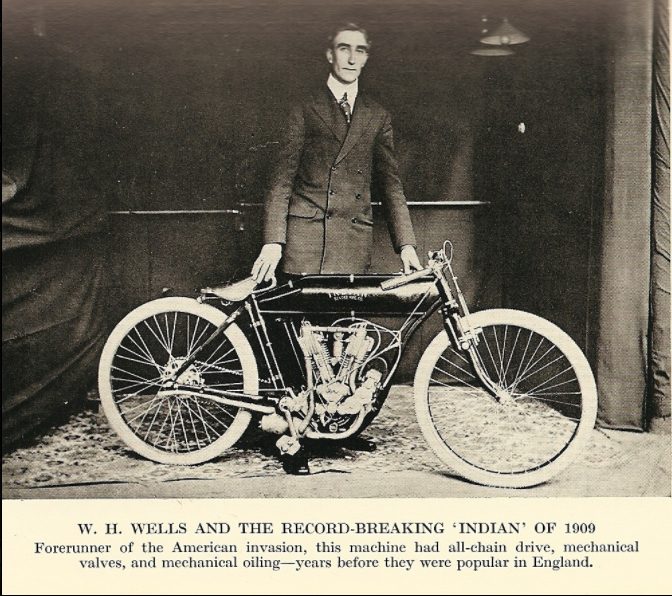
In late 1902 he moved to England as an agent for the steam-powered automobile the ‘Stanley Steamer’. The car was not a commercial success, and Wells switched to importing German-made Allright/Lito motorcycles which he marketed in Britain as the ‘Vindec Special’. With bicycle competition in his blood, he modified a few Vindecs for competition, some with Peugeot 1,000cc v-twin engines, and gained a reputation for winning in hill-climbs and reliability trials. Wells entered the inaugural 1907 Isle of Man TT race on a Vindec twin, and was leading the race comfortably until the last lap when he had three punctures in quick succession. It was while repairing the third puncture that Rembrandt Fowler on a Norton went past him to win the twin cylinder class of the first ever TT. He regretted ever after not winning the race, and history might have looked slightly different had an American won the first TT! Wells’ import company, South British Trading Ltd, went into liquidation after 5 years in business, and with no immediate prospects in England, Wells returned to the USA in March 1909. He happened to meet an old friend from his bicycle competition days, George Hendee, who had commenced manufacture of motor bicycles under the brand name of ‘Indian’.
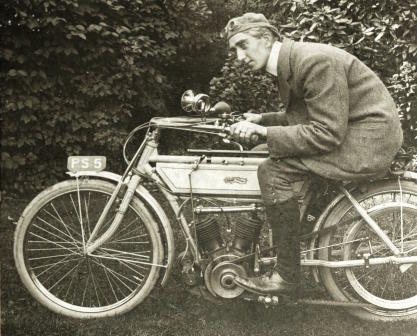
Hendee urged Wells to immediately return to England and set up an Indian marketing, sales and service organization for all of Britain, her colonies, and Europe. Hendee termed this entity a ‘branch office’ of the Hendee Mfg. Co. Ltd. Thus, the Indian depot in London opened for business in May 1909 at 178 Great Portland Street, in the West End close to fashionable Oxford Street and Soho. Launching an extensive sales campaign, Wells worked hard to set up a dealership network in Britain. Always keen on competition, he began offering Indians to top British racers for events at Brooklands and the Isle of Man TT. Billy Wells and Guy Lee Evans entered the 1909 Senior TT on Indian twins. Wells crashed at or very near the start, and was injured. Evans rode a heck of a race and, after the faster of the two famous Collier brothers (Charlie) was forced to retire, Harry Collier had to dig deep and try every trick he knew to stay in front. Harry managed to bring his Matchless twin to the finish line just a minute or two ahead of Evans. It was a thriller of a race.
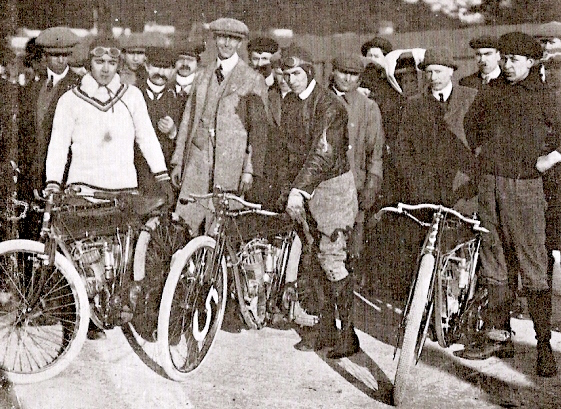
The 1910 TT was expected to be a repeat of the excitement in 1909. Indian chief designer Oscar Hedstrom came over from the US to observe. Wells did not ride but entered an official Indian team of Lee Evans, Charlie Bennett, and Walter Bentley (later famous as “W.O.” of Bentley cars). Entrants on privately-owned Indians included Arthur Moorhouse, Jimmy Alexander from Scotland and Charles B. Franklin from Ireland, all new converts to Indian. But a faulty batch of tire innertubes saw them all drop out, or crash spectacularly from blow-outs. The Collier brothers won easily. The ‘Indian Spring’ was dismal, although Indians did very well at other events during the year. The high point of Wells’ career was the 1911 TT when, again as Team Manager (with Hedstrom also returning as Technical Advisor) he entered a five-man factory team of star American track specialist Jake de Rosier, along with experienced British IoM riders Moorhouse, Alexander, Oliver Godfrey and Charlie Franklin. The combination of their skilled riding and the fact that Indians used chains/gears/clutches over the new ‘Mountain Course’ at the TT, meant Indians took an unprecedented 1-2-3 in the Senior TT.
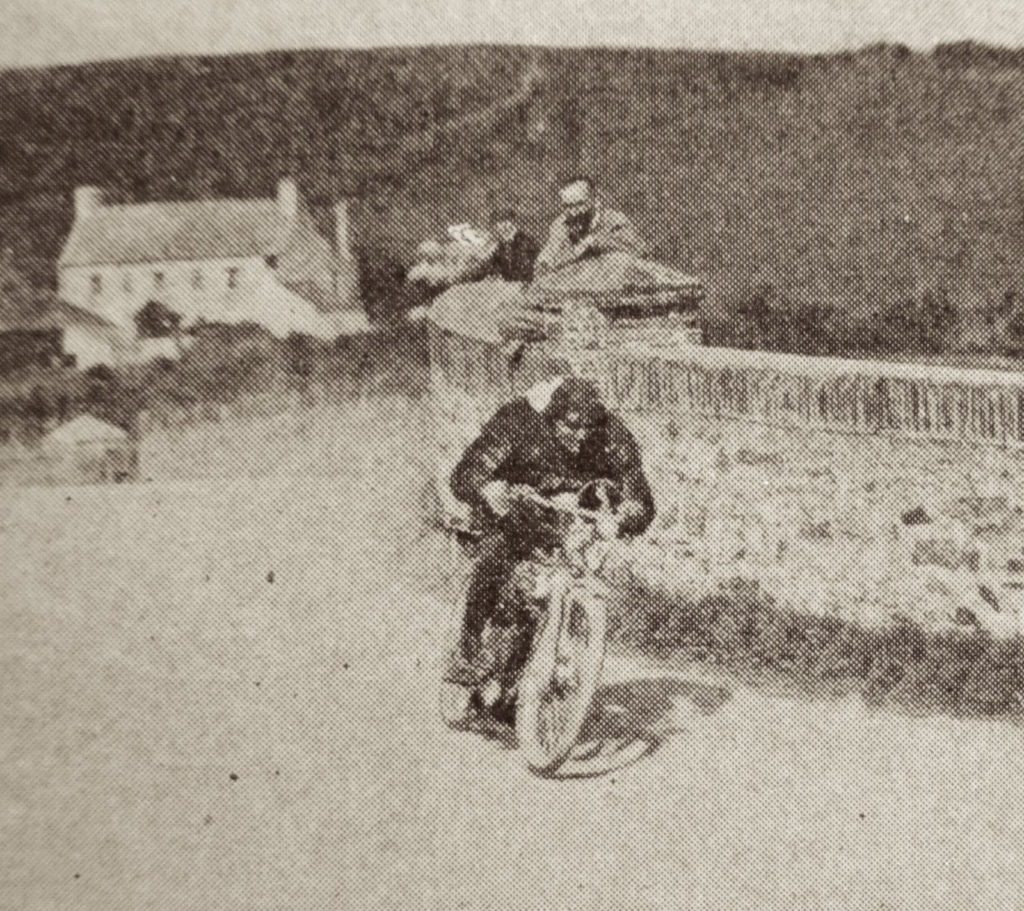
In recognition of his efforts to boost Indian export sales, Wells was made a member of the Hendee Mfg. Co.’s Board of Directors in 1911, a position he held until the company was reorganized and renamed as the Indian Motocycle Company in November 1923. In 1914 Wells recruited Charles B. Franklin to Indian as manager of a newly-opened Dublin Indian depot. Business was slow with Europe at war, and the depot was closed down again in 1916, and Indian board president Hendee imported Franklin (a trained engineer) to Springfield on Wells’ recommendation, to start a job in the Design Department of Indian. Wells’ recommendation had major implications for Indian’s future, for it was Franklin who designed the immortal Indian Scout and Chief models.
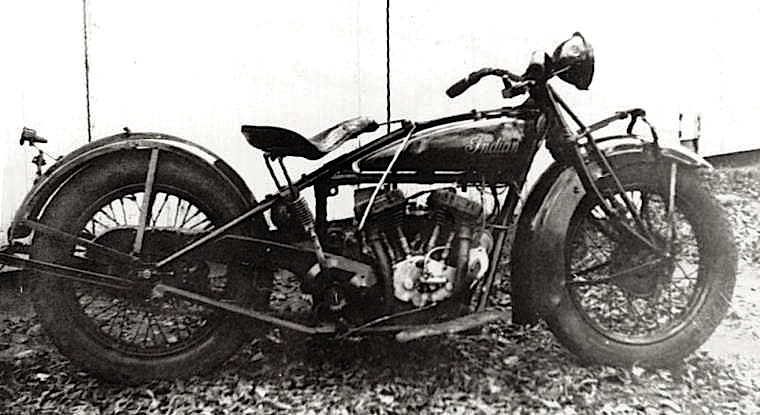
After WWI Wells supported further Indian entries in the TT, and was successful in gaining 2nd and 3rd placings. But a decreasing volume of Indian business in UK made the effort of racing at this level difficult for him to justify beyond 1923, when Freddie Dixon made 3rd place at the TT on his single-cylinder 500cc Indian. By 1925, international trade protectionism meant a 33% tax levied on imported motorcycles in the UK, significantly raising the price of his Indians during an already rough period of the British economy, and Wells was forced to shut down his British Indian operation. Out of work again and deeply depressed, but started a motoring accessory business. In 1928 Wells was approached by entrepreneurs who wanted his help to introduce ‘dirt-track’ (later Speedway) racing to Britain, which had proved wildly popular in Australia. Ever the team manager, Billy Wells became Secretary of Meetings and Clerk of the Course of Stamford Bridge Speedway Track, organizing the first big speedway event at night under electric floodlights. The experiment worked, and the new sport became hugely popular, and profitable, in Britain from then on, with paying customers in the tens of thousands. He was by then in his mid-60s, so returned to his first love in semi-retirement, working from home as a bicycle repairer.
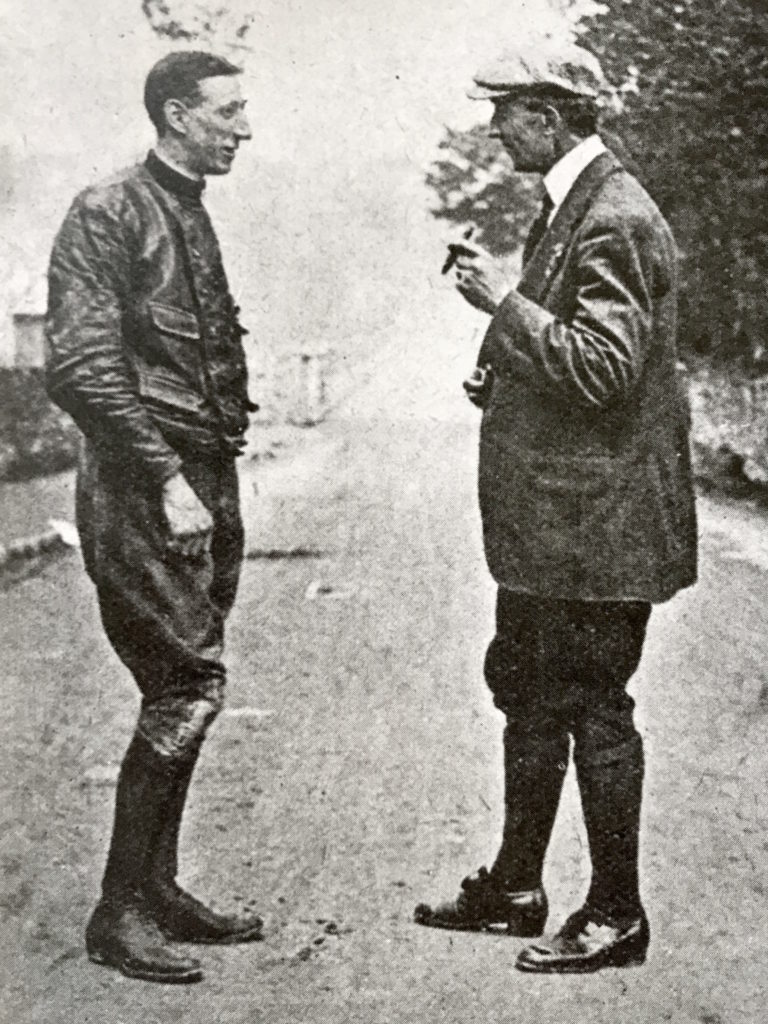
Wells passed away in Harrow, England on 15 January 1954, a pivotal figure in Indian’s international sales success and the architect of Indian’s finest international sporting achievement, the 1-2-3 clean-sweep of the 1911 Isle of Man Senior TT.
[Adapted from the book ‘Franklin’s Indians’, by Timothy Pickering, Chris Smith, Harry V. Sucher, Liam Diamond, and Harry Havelin, available here.]
Related Posts
August 9, 2017
100 Years After the ‘Indian Summer’, Part 4: Oliver Godfrey
Oliver Cyril Godfrey won the 1911 Isle…
August 5, 2017
100 Years After the ‘Indian Summer’, Part 3: Charles Bayly Franklin
Charles Bayly Franklin was Ireland's…

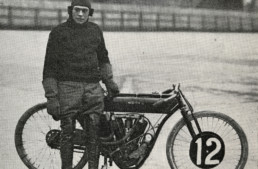
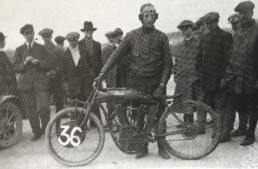

With regards to an article about the 1911 Indian Motocycle Isle of Man winning team.
I read a comment that as far as you know non of the Indians from the six in the race team still exist.
I thought I would let you know that one of the actual TT Winning Indians was in the UK last year and was ridden by Mr Jess Bamford, (President of the Indian Motocycle Club GB) at the lap of honour at the 2011 TT.
The Indian was Number 17, the actual machine ridden by Franklin to second place in the 1911 TT.
The bike arrived from the USA last year but was not running, the bike was prepared by Bob Shacklock and Jess Bamford and was ridden leading the parade at the TT celebrations on the Isle of Man last year.
I have a photograph of the Indian at a local bike show in Nottingham with my brother posing on it for the photograph and there is currently a clip that has been placed on You Tube of the Indian running at the MFN bike show 2011 in Nottingham.
Oliver Godfries winning Indian is actually being or is completed now restored in the USA, so there are Two of the six actual winning Indians i know of still exisiting today. Incredible after 100 years.
Glen Daft
Nottingham
Contemporary reports from The Motor Cycle and Motor Cycling throw some light on the reasons why Wells did not finish in the 1909 TT race. Apparently he had a style of push-starting a motorcycle that involved a high flying leap into the saddle as soon as he’d released the valve lifter and the engine had “caught”. During practice the day before the 1909 TT he mis-timed this leap and came down hard on top of his Indian machine, which caused injuries to his chest and ribs. On the day of the race he started, but he pulled back in and retired after completing only one lap. The pain of his injuries were too much for him to endure on that bumpy road course on a suspension-less motorcycle. After this he did not compete in solo events again, though he did continue to appear at Brooklands and in Reliabilty Trials events (e.g. London to Edinburgh) in sidecar outfits.
TIM
I love to say “The Irish so loved Indian Motorcycles that they gave a native son, Franklin, to the factory in Springfield. He knew more about getting power from a flathead than anyone else on the planet.” Too bad he died at such a young age.